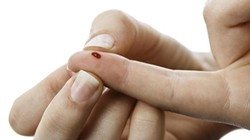When you first begin your oral anticoagulant therapy your hematologist will talk you through all of the possible factors that will affect your INR. However, there are some common consumables that can have an elevate your levels on a short-term and long-term basis:
- NSAID such as Ibuprofen, even at lower doses
- Antibiotics
- Alcohol
- Steriods
- Herbal preparations or food supplements such as cranberry and grapefruit juice, mango, fenugreek and fish oils
- Certain anti-depressant medication such as SSRIs
- Taking too much anti-coagulant medication
Before starting any new medication you doctor will need to check for any potential interactions and adjust your anti-cogulant as needed. You'll also need to have an INR test approximately one week later to ensure you don't need any adjustments.
Food and herbal supplementation is much more difficult to work with which is why having regular INT tests is so important. If you are planning on changing your diet then you will need to discuss your plan in detail with your hematologist to try and preempt any changes ahead of time.
If you have also been sick and not able to eat your usual diet then you will need to speak with your hematologist as soon as possible and arrange for a blood test.
Alcohol can be a tricky vice to deal with sometimes because of the drastic effect it can have on your INR levels. If you like to have a drink on a regular basis it is possible to manage your INR levels as long as you are consistent (alcoholism can be adjusted for as long as both patient and doctor are honest about the situation).
You may be able to spot when your INR is too high as you may experience bleeding gums, nosebleeds and increased bruising. If you notice any of these then speak with your doctor immediately to arrange a blood test.









 Learn How To Kniton 03/08/2017
Learn How To Kniton 03/08/2017
 What is Factor V Leiden Genetic Mutationon 08/05/2013
What is Factor V Leiden Genetic Mutationon 08/05/2013
 Increasing Fiber For Optimum Healthon 07/24/2013
Increasing Fiber For Optimum Healthon 07/24/2013
 Bobski606's Wizzographyon 02/23/2013
Bobski606's Wizzographyon 02/23/2013



Comments